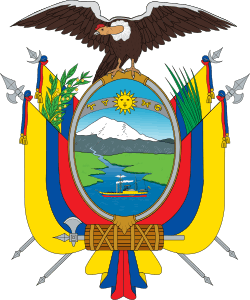Crime in Ecuador

Crime in Ecuador is investigated by the Ecuadorian police.
Crime by type
Murder
In 2012, Ecuador had a murder rate of 12.4 per 100,000 population.[1] There were a total of 1,924 murders in Ecuador in 2012.[1] By 2014, this had decreased to 8.23 per 100,000, with 1,309 murders recorded that year.[2]
Corruption
In a 2009 diplomatic cable from the United States diplomatic cables leak released by WikiLeaks and published by El País in April 2011, U.S. Ambassador Heather Hodges said that "corruption among Ecuadorian National Police officers is widespread and well-known" and that "U.S. investors are reluctant to risk their resources in Ecuador knowing that they could be targeted by corrupt law enforcement officials."[3][4]
Terrorism
Domestic terrorist groups present in Ecuador include the Popular Combatants Group (PCG), the Revolutionary Militia of the People, the Marxist-Leninist Party of Ecuador, and the Alfarista Liberation Army.[5] Foreign groups include the Colombian groups Revolutionary Armed Forces of Colombia (FARC) and National Liberation Army (ELN).[5]
Domestic violence
Although prohibited by law, domestic violence in Ecuador is a human rights problem.[6] In a 2008 survey, 32.4% of the women interviewed aged 15–49 said they had suffered physical or sexual violence by a current or former partner.[7]
References
- 1 2 Global Study on Homicide. United Nations Office on Drugs and Crime, 2013.
- ↑ https://data.unodc.org/
- ↑ Aznárez, Juan Jesús (4 April 2011). "La corrupción policial en Ecuador es generalizada" [Police corruption in Ecuador is widespread]. El País (in Spanish).
- ↑ "09QUITO572 Cable sobre la corrupción" [Cable on corruption]. El País.
- 1 2 "Chapter 2: Country Reports, Western Hemisphere Review. 2009 Incidents." US State Department. Accessed January 30, 2015.
- ↑ "Country Reports on Human Rights Practices for 2013". state.gov. Retrieved April 3, 2015.
- ↑ "Violence Against Women in Latin America and the Caribbean: A comparative analysis of population-based data from 12 countries (pdf)". Pan American Health Organization and the Centers for Disease Control and Prevention. 17 January 2013. Retrieved April 3, 2015.

.svg.png)